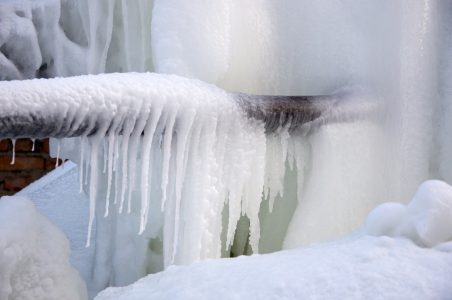What are your thoughts and feelings about How to Prevent Your Pipes From Freezing?

Cold weather can ruin your plumbing, especially by freezing pipes. Below's exactly how to prevent it from happening and what to do if it does.
Introduction
As temperatures drop, the danger of icy pipes boosts, potentially resulting in costly repair work and water damage. Recognizing just how to avoid frozen pipes is crucial for homeowners in cool environments.
Comprehending Icy Pipes
What causes pipes to ice up?
Pipes ice up when exposed to temperatures below 32 ° F (0 ° C) for expanded periods. As water inside the pipelines freezes, it broadens, taxing the pipeline wall surfaces and possibly creating them to rupture.
Threats and damages
Icy pipes can bring about water disruptions, residential property damages, and expensive repairs. Ruptured pipes can flood homes and create extensive architectural damage.
Signs of Frozen Piping
Determining frozen pipes early can prevent them from breaking.
How to determine frozen pipes
Try to find reduced water circulation from taps, unusual smells or noises from pipelines, and noticeable frost on revealed pipes.
Avoidance Tips
Protecting at risk pipelines
Cover pipelines in insulation sleeves or use warmth tape to shield them from freezing temperatures. Focus on pipelines in unheated or external areas of the home.
Heating methods
Keep interior spaces sufficiently warmed, especially areas with pipes. Open cupboard doors to allow warm air to distribute around pipelines under sinks.
Securing Outdoor Pipes
Yard tubes and exterior faucets
Separate and drain pipes garden tubes before winter. Install frost-proof spigots or cover outside taps with protected caps.
What to Do If Your Pipes Freeze
Immediate activities to take
If you believe icy pipes, maintain faucets open up to soothe stress as the ice thaws. Utilize a hairdryer or towels taken in hot water to thaw pipes gradually.
Long-Term Solutions
Architectural modifications
Consider rerouting pipelines far from exterior wall surfaces or unheated locations. Include additional insulation to attics, cellars, and crawl spaces.
Upgrading insulation
Buy high-quality insulation for pipelines, attics, and walls. Correct insulation aids preserve consistent temperatures and decreases the danger of frozen pipelines.
Verdict
Stopping frozen pipelines requires proactive steps and fast responses. By comprehending the causes, indicators, and safety nets, homeowners can protect their pipes during cold weather.
5 Ways to Prevent Frozen Pipes
Drain Outdoor Faucets and Disconnect Hoses
First, close the shut-off valve that controls the flow of water in the pipe to your outdoor faucet. Then, head outside to disconnect and drain your hose and open the outdoor faucet to allow the water to completely drain out of the line. Turn off the faucet when done. Finally, head back to the shut-off valve and drain the remaining water inside the pipe into a bucket or container. Additionally, if you have a home irrigation system, you should consider hiring an expert to clear the system of water each year.
Insulate Pipes
One of the best and most cost-effective methods for preventing frozen water pipes is to wrap your pipes with insulation. This is especially important for areas in your home that aren’t exposed to heat, such as an attic. We suggest using foam sleeves, which can typically be found at your local hardware store.
Keep Heat Running at 65
Your pipes are located inside your walls, and the temperature there is much colder than the rest of the house. To prevent your pipes from freezing, The Insurance Information Institute suggests that you keep your home heated to at least 65 degrees, even when traveling. You may want to invest in smart devices that can keep an eye on the temperature in your home while you’re away.
Leave Water Dripping
Moving water — even a small trickle — can prevent ice from forming inside your pipes. When freezing temps are imminent, start a drip of water from all faucets that serve exposed pipes. Leaving a few faucets running will also help relieve pressure inside the pipes and help prevent a rupture if the water inside freezes.
Open Cupboard Doors
Warm your kitchen and bathroom pipes by opening cupboards and vanities. You should also leave your interior doors ajar to help warm air circulate evenly throughout your home.

I was shown that report on Helpful Tips to Prevent Frozen Pipes this Winter from a friend on our other web page. Sharing is good. Helping people is fun. Thank you so much for going through it.
Browse Our Site
Comments on “Ways to Prevent Frozen Pipes in Winter: Professional Guidance”